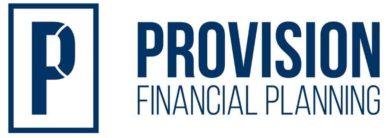When tasked with saving for your kid’s college and your retirement at the same time, how do you know which to prioritize? Deciding between your child’s college education or saving for your retirement is one of the most common financial issues you will face in your 30s and 40s. In a perfect world, we would of course adequately fund both.
If you have either excess cash flow or excess cash, you may think a 529 plan is the next place to save since it is likely going to come sooner than retirement. This is logical because the cost of attendance is around $26k per year at Towson University, and that is for in-state.
Besides, you would take a bullet for your kids, so why wouldn’t you let your retirement accounts take a bullet to prioritize their education?
There is one primary reason, and several others that are less significant by comparison.
Most importantly, you cannot get a loan for retirement. It is one of the few “things” that you cannot finance these days. There are three different ways to pay for college: before (savings), during (current income) and after (loan payments), but only one way to pay for retirement, and that’s before.
Aside from putting food on the table for your family, your primary financial responsibility in life is to prepare for the day when you are no longer working. Saving for college instead of retirement does not help you prepare for this day.
Another reason to prioritize retirement savings over college savings has to do with the power of compounding. Let’s assume you are 35, your child is 5, and you invest $10,000 today. Assuming a 6% return, you’ll have $21,329 in 13 years. In 26 years, you’ll have $45,494. In the second scenario, you waited exactly twice as long to collect, but you have more than twice as much money.
This is the power of compounding and why a $1 of retirement savings today is worth more than a $1 of college savings today assuming retirement is further into the future than college.
As I mentioned earlier, you can always pay for college out of current cash flow while your kids are in school, even if you have to stop saving in retirement plans for that specific period of time.
The fact that retirement assets are not counted for financial aid purposes is another benefit.
Financial planning requires prioritization and trade-offs. Distinguishing between probabilities and possibilities can help. You will stop working one day, whether you choose to or not. But will your kids go to college? Will the internet make college cheaper? Will Congress or a future president make it free? Will your child get a scholarship?
It is more probable you will stop working (100%) than your child will go to college and you will have to pay the full price tag shown today.
Hopefully by now I’ve convinced you to prioritize your retirement savings. Here is a good way to start:
- First, contribute enough to get any match available in employer-sponsored retirement plans.
- Then, fully fund your Roth or Traditional IRAs up to the allowable amount.
- Then, fully fund your employer-sponsored retirement plans.
- Then, and only then, start saving for college. With very few exceptions, you should use a 529 plan.
If I haven’t convinced you, you can skip #3, but please don’t skip 1 and 2.
